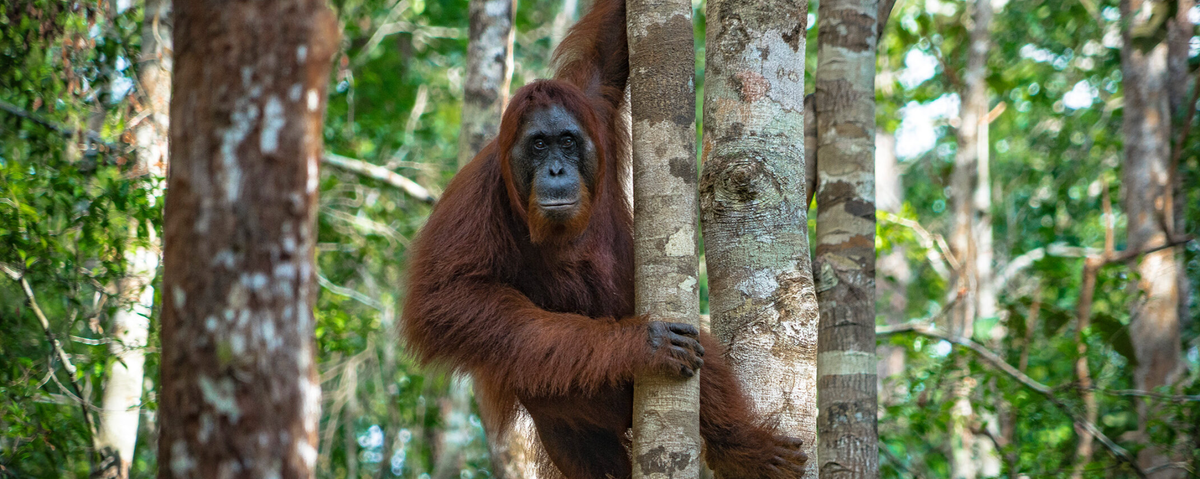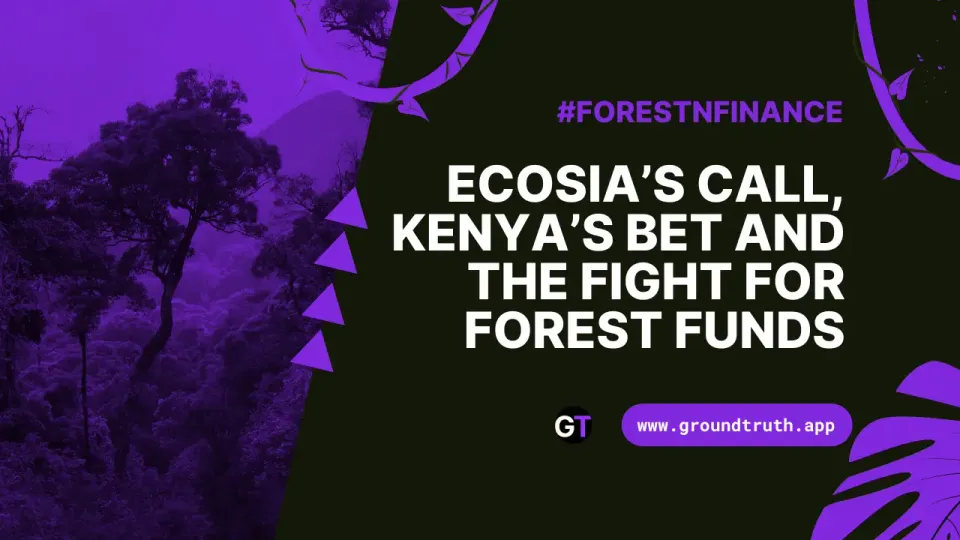COP16: New Fund Will Pay Nations to Save Forests 🌍
Known as the TFFF, the Tropical Forest Forever Facility, this innovative new fund is feeding that appetite for results.

This article by Justin Catonoso originally appeared in Mongabay.
- For years now, the world’s wealthiest nations have pledged billions to tropical nations to help them afford to conserve their native forests — an effort that benefits the entire world, especially for the carbon storage those tropical forests provide, as the climate crisis deepens.
- But those investment promises by donors have again and again failed to fully materialize. Today, the total funding shortfall for the UN’s Sustainable Development Goals is in the trillions of dollars.
- This week, a new funding mechanism which is about to launch was greeted with great fanfare at the COP16 biodiversity summit in Colombia. TFFF, the Tropical Forest Forever Facility, is designed to be “a fund unlike any other.”
- The fund’s innovative design is structured to deliver $4 billion year-after-year to tropical nations to incentivize those countries to keep their native forests standing. The fund’s manager will be independent of governments and investors, and may involve Indigenous groups and local communities to help manage intact tropical forests
CALI, Colombia — The hunger for new, reliable forms of finance to save biodiverse forests in developing tropical countries was palpable here at a jam-packed event during the COP16 United Nations biodiversity summit, on Monday, October 28.
Known as the TFFF, the Tropical Forest Forever Facility, this innovative new fund is feeding that appetite for results. It is a novel funding mechanism in conservation, though similar to how banks operate as lenders.
The hope is that the mechanism will initially attract $125 billion from nations and investors (more if the demand is there), with the principle paying a return on investment over a 20-year period. An average investment performance of 5.5% annually is expected to deliver $4 billion year after year to incentivize tropical countries to keep their native forests intact, tree by tree.
The idea: Treat trees as valued shareholders, according to one report. And some say it’s about time, since biodiverse forests daily provide the world with essential services ranging from water purification and storage to weather moderation, fish and wildlife habitat, and, importantly, carbon sequestration — without ever sending humanity a single invoice.
“This is an idea that came from the country of Brazil and which Colombia supported from Day 1. That’s because it is a way of valuing nature without turning it into a commodity,” said Susana Muhamad, COP16 president and Colombia’s minister of the environment.
Her presence at the October 28 event signaled the seriousness with which the launch of TFFF is being regarded. This does, too: the fund is already on the agenda for the G20 Leaders’ Summit of the world’s wealthiest nations who are meeting in Brazil next month.
At COP16, Nik Nazmi bin Nik Ahmad, Malaysia’s minister of natural resources, joined Muhamad on a five-person panel, and said, “We need to unlock hope and love in these finance discussions and this is that opportunity.”
Razan Al Mubarak, managing director of the Environment Agency Abu Dhabi in the United Arab Emirates, underscored her personal enthusiasm, and her nation’s commitment to TFFF with a story:
At the UN climate summit last November in Dubai, UAE, she emceed the event at which Brazilian President Luis Inacio Lula first disclosed the broad outlines of TFFF. She didn’t have an interpreter as Lula spoke in Portuguese, so she watched the crowd in the room as it fell silent and rapt — then erupted in a roar of applause.
“I asked a colleague what just happened,” Al Mubarak recalled. “And she responded, ‘History.’”
“We in Dubai felt that this fund would not be incremental,” she added. “It would not be playing around the margins. This is a ‘go big, or go home’ fund. It’s the stuff of legend. And it rises to the occasion.”

Filling an enormous funding gap
Let’s be clear: TFFF does need to score big, and then some. While Muhamad was careful to note that TFFF is just one of many much-needed conservation funding mechanisms, those already existing donation-dependent funds are all woefully undercapitalized. The Green Climate Fund, for example, launched in 2014 at the UN climate summit in Lima, Peru, holds less than $70 billion today. It was supposed to hit $100 billion — four years ago. And stand at $100 billion annually every year since.
That’s just one shortfall. All told, experts put the total funding gap for the UN’s Sustainable Development Goals in the trillions.
TFFF will only fill a small portion of that gap. Still, Garo Bateman, director of the Brazilian Forest Service and an official who helped devise the initiative, said in a statement: “We believe this fund will be a game-changer in global climate finance. This solution benefits both donor countries and countries that protect their forests.”
At COP16, officials announced that TFFF is nearing the completion of its organizational phase. It will start raising investment capital in early 2025, and once launched will be managed independently of any country by an apolitical entity like the World Bank. The fund is expected to be operational by the start of the November 2025 UN climate summit, fittingly hosted by Brazil.

How it works
The notion of something like TFFF has been around for years. Experts have long reasoned that if one really wants to stop deforestation in developing countries, then forests need to be worth at least as much standing as they are cut for timber or cleared for cattle or resource extraction. And tropical countries with those trees must be paid. Annually.
Because that’s not happening, tropical nations over the past 20 years have continued to lose an average of 3.64 million hectares (9 million acres) of forest annually, an area larger than the U.S. state of Maryland. TFFF aims to slow or halt that loss, soon.
It is projected to work like this: Wealthy nations such as the United States, Norway, Germany, France, Great Britain, and the UAE (all early proponents of the idea), will loan, not donate, $25 billion, with a fixed rate of return over 20 years. Those government investments are expected to act as seed capital for philanthropies and green-hearted billionaires to invest another $100 billion — one time, not year after year.
The fund’s principal will be managed with a combination of caution and aggressiveness. The goal is for it to be as relatively stable as U.S. Treasury bonds. “We want a fund with a AAA rating,” Marina Silva, Brazil’s minister of the environment, told the COP16 crowd.
If it all works as designed, the diversified portfolio of investments will return enough to repay the investors at a fixed rate. The gains above that rate, estimated to be $4 billion annually, will be available to about 70 developing tropical countries to compensate them for their intact old-growth, mature or restored forests, but not plantations, at $4 per hectare (2.5 acres).
Organizers confirmed that advanced satellite monitoring will verify the hectares available in each country for compensation. Nations will receive payments annually for 20 years, at which point the fund will close. If deforestation occurs, countries will be penalized $400 per hectare lost in a given year.

Challenges of governance and design
“I think the important thing to understand is that this is a fund unlike any others,” Maurico Voivodic, WWF Brazil’s executive director, told Mongabay. “That matters a lot because it will attract political interest to a new model of funding.”
As optimistic as he is about TFFF, Voivodic — whose NGO is assisting with its organization — explained that the challenges ahead go beyond raising so much money; other critical elements must be carefully addressed: “There are still a lot of questions [as to] who exactly will manage the fund.”
That entity, he stressed, must have strong, clear, and transparent governance powers. No politics. No favors. And full inclusion. This as yet to be selected entity will need to manage complex government appeals to TIFF with a fair hand, while also involving Indigenous groups and local communities who will be called on in many tropical countries to manage intact forests.
“I think the conservation piece, compared to the finance and the governance elements, is the easiest one to develop because it’s a matter of modeling,” Voivodic said. He added that how countries spend the annual payouts also needs to be flexible, without too many strings attached. “If we go too deep into such details, we will lose too much time.”
As the event concluded in the Colombian pavilion, Muhamad, the COP16 president, reminded the crowd that while TFFF could be part of the solution to curtailing forest and biodiversity loss, no single finance tool will solve the global biodiversity crisis.
“We need to think broader, [and] we definitely need more public money. TFFF is responding to that [need] and can create an ecosystem of mechanisms and strategies that take us to the level of finance we need to really stop the loss of biodiversity, and increase our capacity to make peace with nature,” she said, echoing the motto of COP16.

License
Catanoso, Justin. COP16: ‘A Fund Unlike Any Other’ Will Pay Tropical Nations to Save Forests. Mongabay, 30 Oct. 2024. Republished under a Creative Commons 4.0 International License, with minor changes tot title and formatting.




